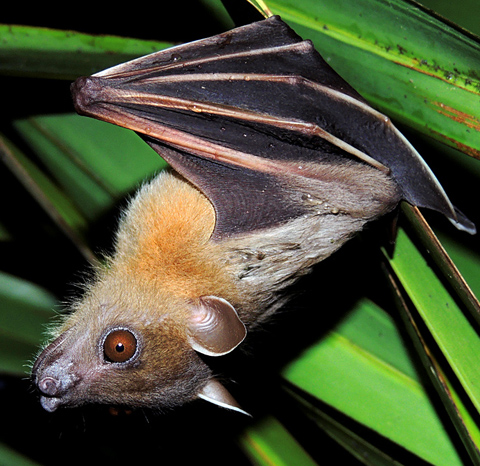Facts About Indian Short-nosed Fruit Bat
The greater short-nosed fruit bat, also known as the short-nosed Indian fruit bat, is a remarkable species of megabat native to South and Southeast Asia. These bats are easily identifiable by their elongated snouts and fur, which varies in color from brown to grey-brown with lighter underparts. Their fur is also notably fine and silky.
You can often find these bats in tropical forests, fruit cultivation areas, grasslands, and even mangrove forests. They prefer to roost high up in palm trees or create makeshift shelters using leaves and twigs.
Greater short-nosed fruit bats are exceptionally social creatures. They typically form same-sex groups, but these groups expand during the mating season. These bats are polygynous, meaning males mate with multiple females. They exhibit unique mating behaviors, including fellatio, which prolongs the duration of copulation.
Breeding occurs twice a year, and females usually give birth to a single offspring at a time. Newborn bats weigh around 13.5 grams. Female bats reach sexual maturity at about five to six months old, while males take approximately a year.
When it comes to their diet, these bats favor fruits such as guava, banana, chikoo, dates, and lychees. Unfortunately, this preference can make them a nuisance for farmers, as they can inflict significant damage on fruit crops. They are also potential vectors for diseases like Japanese encephalitis. Nevertheless, they play a crucial ecological role through seed dispersal and pollination.
Interestingly, these bats have also been observed engaging in geophagy, the consumption of soil. This behavior is believed to help them obtain essential minerals or detoxify their systems.

 Laos
Laos